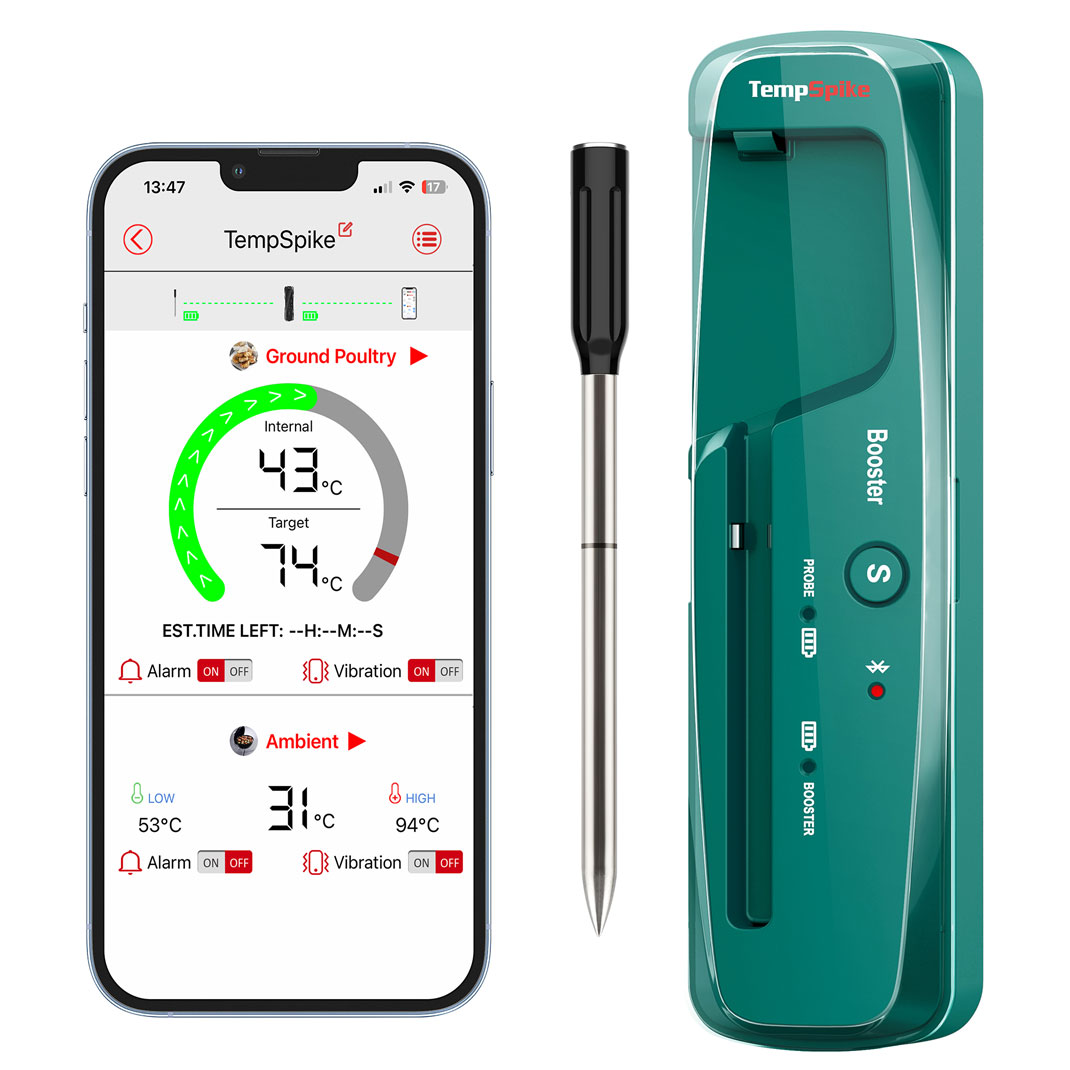What is Temperature Danger Zone and How to Avoid?






 288 Comments
288 Comments
When it comes to cooking and cooling down food, it’s important to know the food temperature danger zone and how to avoid food exposure to this zone over a certain time period. Avoiding the danger zone will limit the potential to exposing yourself or another person to food related illnesses. These illnesses, also known as food poisoning, can be caused from bacteria such as Salmonella and E Coli. It’s important for you to know:
- What is the temperature range of the danger zone
- What you can do to avoid food illnesses by knowing the facts
Food Temp Danger Zone
What is the temperature danger zone? Bacteria can grow fastest during the food temperature danger zone, which is 40°F to 140°F. In just 20 minutes, the amount of bacteria can double when food is in this danger zone. To avoid this food danger zone, don’t leave food out at room temperature for a period of 2 hours or more. For room or outside temperatures of 90°F or higher, food cannot be left out for more than 1 hour. If you are unsure of the temperature of your food after a period of sitting, it’s important to check the internal temperature of the food.
What is the temperature danger zone for food that is hot versus cold?
For hot food, keep the temperature at 140°F or warmer. If food will not be served immediately or the food will continue to sit after being served, hot food should remain in warming vessels, including crock pots, steam tables or other warming devices.
For cold food, temperatures should stay at 40°F or below. In order to keep food at lower temperatures, you can put food containers in ice or keep the food refrigerated until ready to serve.
Cooking Raw Meat & Poultry
When cooking raw meat and poultry, it’s important to maintain a safe internal temperature. Always roast meat and poultry at 325°F or higher. Avoid food related illnesses by maintaining 140°F or above if you are not serving it immediately after cooking. If the cooked meat will sit over a period of time, you must use heating vessels to keep the meat at the 140°F. If you are unsure of the temperature, use a food thermometer to occasionally check the internal temperature of the meat. These are small measures to take to avoid bacteria growth, which can lead to food poisoning or other food related illnesses.
The Danger Zone and Leftovers
Food safety extends far beyond just cooking! After serving, there may be leftovers that are still at higher temperatures that will be refrigerated for later use. If you do not cool food properly, this can lead to food related illnesses because bacteria can grow on food while they cool. How can you avoid improper storage? Use shallow containers to store food because it will cool faster, since your goal is to get the temperature to 40°F or below within 2 hours.
Larger containers will take much longer to cool, which could mean the middle section of the food is still warm even if the top is cooler. This opens up a chance for bacteria to form on the food, leading to food related illnesses. When reheating leftovers, it’s important to reach an internal temperature of 165°F or the food should be steaming and hot. If microwaving, cover the food and place on a rotating tray to heat evenly.
What is the Danger Zone When Smoking Meat?
When hot and cold smoking meat, it’s crucial to know exactly what you are doing to avoid the danger zone and potential bacteria that can lead to food illnesses. Since smoking meat can take anywhere from a few hours to a few days at a temperature of 90°F, bacterial growth can happen if proper measures are not taken. Contributing factors to bacteria growth also include the low acid level of the meat and the limited amount of oxygen during the smoking process. It’s crucial to have the proper tools and measurements to smoke meat that is safe to eat.
For hot smoking, the temperatures are well above 140°F, with temperatures ranging from 190°F to 300°F for a few hours to a few days. For at home smokers, you must learn to cook at a safe temperature to kill the bacteria for safe consumption.

For cold smoking, it’s much easier to do improperly, so leave it to the pros! It’s even more difficult because the salt levels must be measured and added at a specific amount and very accurate temperatures have to be maintained.
If you are a professional, it’s still important to have accurate tools, such as ThermoPro food thermometers. ThermoPro offers a wide range of digital and wireless thermometers with a probe, which will give you more accurate readings. When hot or cold smoking, maintaining specific temperatures is much more difficult than cooking meats or poultry with other methods. These tools can come in handy to prevent food related illnesses.
What is the Temperature Danger Zone Chart?
The temperature danger zone chart is a food safety information chart from the United States Department of Agriculture Food Safety and Inspection Service. This chart lists the danger zone temperatures and danger zone facts. The danger zone chart is a great reference to cooking, maintaining and storing food, since it lists the minimum internal temperature for safety in cooking and maintaining specific food.
Food such as poultry, stuffing and casseroles, along with reheating leftovers, should reach a temperature of 165°F. Egg dishes and ground meat should reach a temperature of 160°F. 145°F temperature is listed for beef, pork, lamb, veal roasts, steaks and chops. Ham is listed at 140°F. For the refrigerated temperatures, 40°F is the refrigerator temperature and 0°F is the freezer temperature.
The temperature danger zone chart also includes the facts about storing and reheating leftovers. This chart also lists the USDA Meat & Poultry hotline that you can call with questions at 1-888-MPHotline. This number is open all year long and there is also an automated response system called “Ask Karen” that users can chat with during hotline hours.
What is the 40 140 Rule?
The 40 140 rule is an easy to remember rule for food safety temperatures. 40°F is the internal meat temperature when the cooking begins. This is the point where food is removed from the refrigerator at a safe temperature that it was stored at. 140°F is the internal temperature that meat must meet within 4 hours. It’s just as important that temperatures are maintained in reverse when storing food. Food needs to go from 140°F to the lower 40°F within 2 hours of refrigeration. While there is an ongoing discussion about the 40 140 rule, it is an easy reminder to avoid unwanted bacteria that can lead to food illnesses from improper food cooking or storage.

Source: U.S. Department of Agriculture (USDA)
Reminders and Tips for Food Safety
Always remember that food left out too long at room temperature can cause unwanted bacteria to grow at very high and dangerous levels, which can result in illnesses such as Salmonella and E. Coli. When preparing, cooking, storing and reheating food, remember that the danger zone is 40°F to 140°F. If you are cooking hot food, keep the food at 140°F or higher. If you are not serving food immediately, it’s important to continue maintaining this temperature to prevent bacteria growth.
You can easily keep food hot with warming vessels like slow cookers, steam tables, chafing dishes or other warming devices that are easily available for purchase at local stores. You can also check the temperature of your food with thermometers. ThermoPro is a great resource for thermometers because they offer immediate temperatures through digital and wireless means. Sometimes people overlook the importance of keeping cold food at a lower temperature also, but rules still apply with these food. Always maintain 40°F or lower with cold food by refrigerating until serving.
You can also serve containers of food in ice to prevent them from reaching room temperature. After serving, remember to refrigerate food in shallow containers to reach lower temperatures sooner. You can also freeze food, which will cool the food even faster in the time needed. Food safety and the danger zone should always be in your mind when preparing, cooking, maintaining and storing food to prevent food poisoning and other food related illnesses that can have serious effects on the health of yourself and others. You can share this important knowledge with others that cook, serve and store food.























